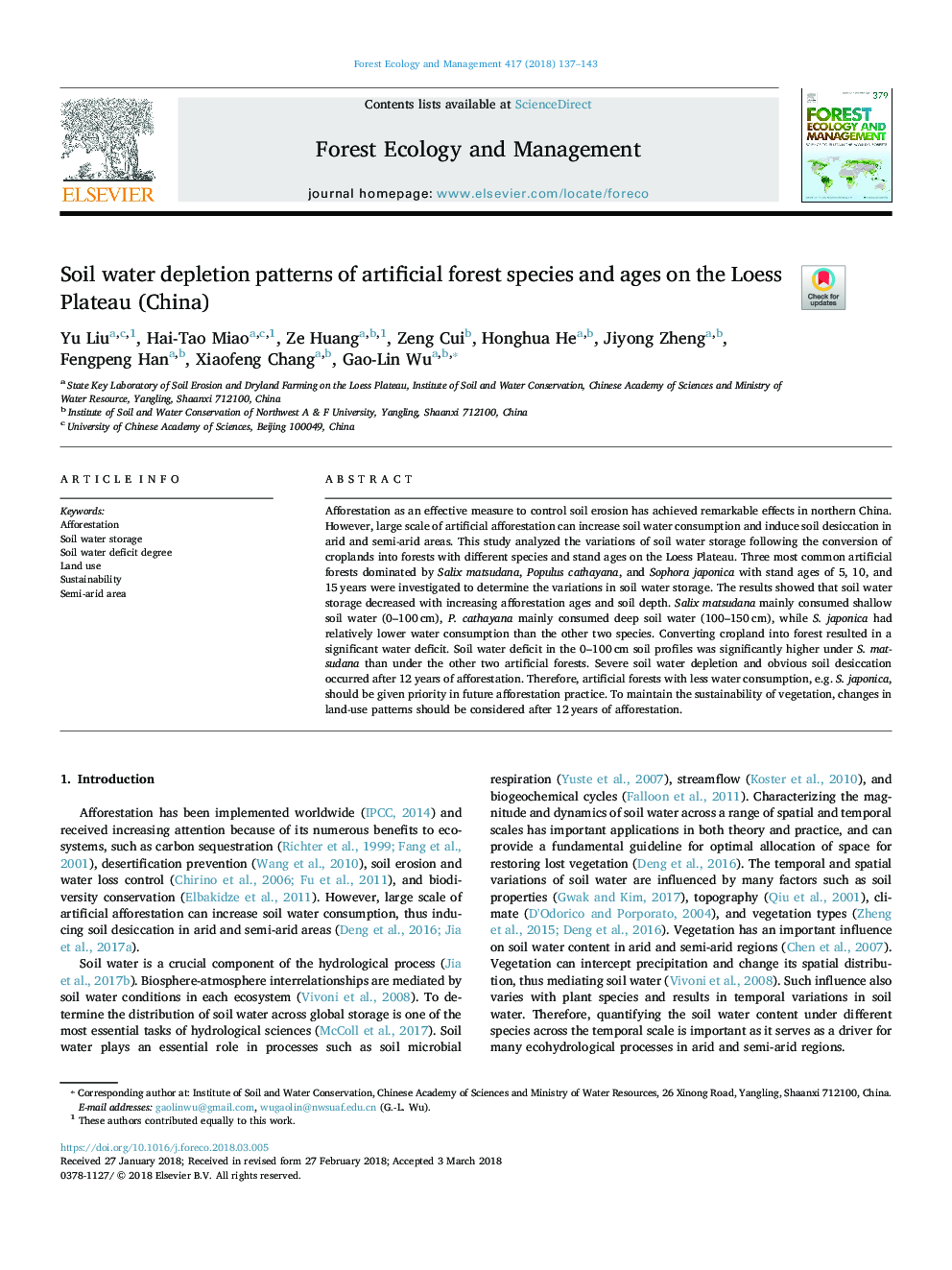| Article ID | Journal | Published Year | Pages | File Type |
|---|---|---|---|---|
| 6541749 | Forest Ecology and Management | 2018 | 7 Pages |
Abstract
Afforestation as an effective measure to control soil erosion has achieved remarkable effects in northern China. However, large scale of artificial afforestation can increase soil water consumption and induce soil desiccation in arid and semi-arid areas. This study analyzed the variations of soil water storage following the conversion of croplands into forests with different species and stand ages on the Loess Plateau. Three most common artificial forests dominated by Salix matsudana, Populus cathayana, and Sophora japonica with stand ages of 5, 10, and 15â¯years were investigated to determine the variations in soil water storage. The results showed that soil water storage decreased with increasing afforestation ages and soil depth. Salix matsudana mainly consumed shallow soil water (0-100â¯cm), P. cathayana mainly consumed deep soil water (100-150â¯cm), while S. japonica had relatively lower water consumption than the other two species. Converting cropland into forest resulted in a significant water deficit. Soil water deficit in the 0-100â¯cm soil profiles was significantly higher under S. matsudana than under the other two artificial forests. Severe soil water depletion and obvious soil desiccation occurred after 12â¯years of afforestation. Therefore, artificial forests with less water consumption, e.g. S. japonica, should be given priority in future afforestation practice. To maintain the sustainability of vegetation, changes in land-use patterns should be considered after 12â¯years of afforestation.
Related Topics
Life Sciences
Agricultural and Biological Sciences
Ecology, Evolution, Behavior and Systematics
Authors
Yu Liu, Hai-Tao Miao, Ze Huang, Zeng Cui, Honghua He, Jiyong Zheng, Fengpeng Han, Xiaofeng Chang, Gao-Lin Wu,
